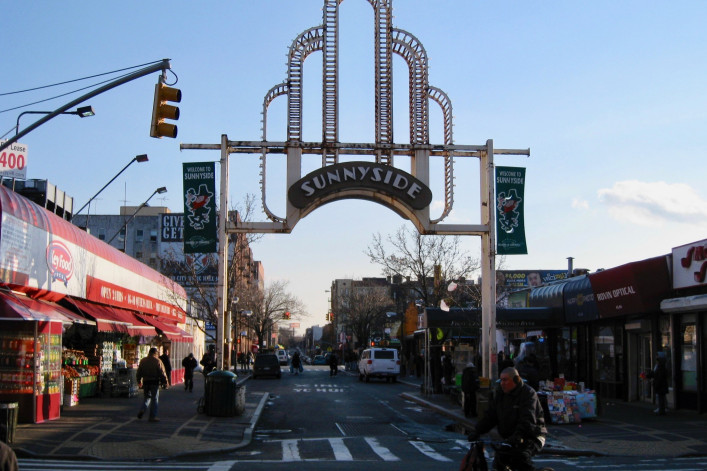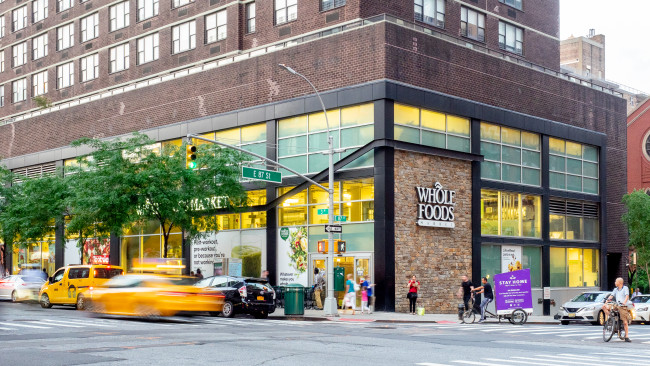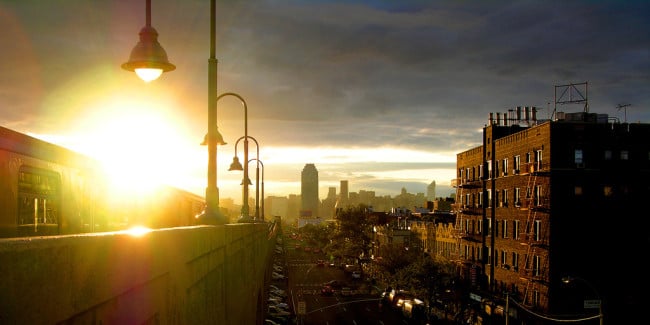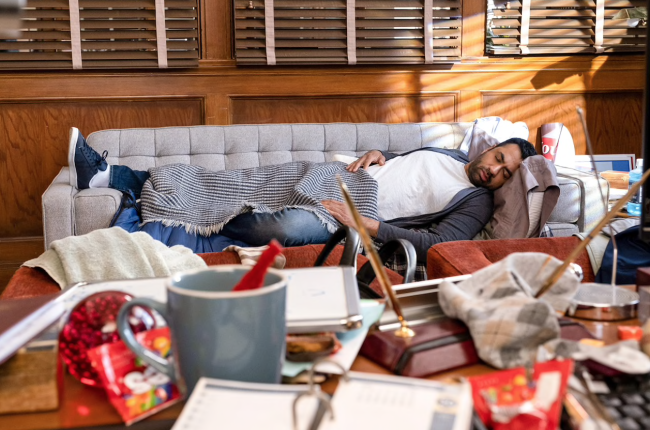From Williamsburg to Sunnyside: Ditching hipsterland for a homier fit

"We don’t need a reservation or a bank loan to go out to dinner. It feels homey here, in a way that grimy-then-shiny Williamsburg never did," our writer says.
When my husband and I got engaged in 2003, we were both long-term renters with sweet deals—mine was a one bedroom in Astoria, his was a three bedroom he shared with a roommate in Williamsburg. We knew we wanted to start a family immediately, so the roommate left and his larger apartment won. My brother took over my lease, and I decamped from low-key Queens to about-to-explode Williamsburg.
We stayed in that Williamsburg apartment for 15 years, putting down roots, and seeing our son through elementary school. But the neighborhood was undergoing drastic changes—getting more glamorous and less gritty, and pushing people like us out, or so it felt.
When I moved in, my apartment building was one of just two residential buildings on the block; the rest were warehouses and factories. The BQE was literally next door. Walking home from the L train at night felt scary, since there were few people on the streets. Then, after zoning law changes, developers eventually tore down every one of those commercial buildings and replaced them with luxury apartments.
[Editor's Note: Brick Underground's series “Transitions” features first-person accounts of what it’s like to move from one New York City neighborhood to another. Have a story to share? Drop us an email. We respect all requests for anonymity.]
The demographics of our neighborhood began to change dramatically, from elderly Italian people and struggling artists to actual rock stars, art dealers, and 20-somethings with wealthy parents to pay for their apartments in the epicenter of hipsterdom. The PTA at my son’s school went from having $300 in the bank when he entered pre-K to holding fundraising auction galas that brought in tens of thousands in a single night by the time he graduated seven years later. Restaurants opened that made “Best of New York” lists and served $30 entrees.
Feeling left behind
Meanwhile, though, our landlady, whose family had built our three-story building around the turn of the 20th century, did almost no upkeep. Everything felt shabby, and dirty. Our apartment took up the whole first floor, which meant that pretty much any leak in any other apartment would eventually find its way to us, but her approach to repairs provided little more than a band-aid. Water damage made our kitchen ceiling cave in annually for the last few years we were there.
By 2015, I no longer felt like I belonged in my neighborhood. The new, tall buildings around us blocked out the light, making our apartment seem cave-like. Stepping out my front door made me feel old and poor in comparison to the people thronging the streets. We did everything we could to avoid going near Bedford Avenue on the weekends. I dreamed of living elsewhere, but our bargain-basement rent was so out of whack with the times, moving felt impossible.
And then the landlady decided to cash in on the Williamsburg boom. I have no idea what took so long, but in 2018 she hung a “for sale” sign on the side of the building. My husband hadn’t had a lease since his first year there in the early 90s, so we had few protections (the building only had five apartments, so it was too small to be rent-stabilized). As soon as she made a sale, we assumed we would be ousted in 30 days. We decided to see what else was out there.
Finding a better fit
It turned out to be easier than I expected to find a better place. In August 2018, we moved into a large, sunny, sixth-floor two bedroom in Sunnyside, Queens. We lost our home office—I work from home, so this was a big deal—and our galley kitchen is too small for us to cook together. The rent is $800 more a month, and because parking around here is so tight, we pay another $200 to rent a spot. My husband’s commute to his office in downtown Brooklyn went from a 20-minute bike ride to an hour-plus on the 7 and the G trains.
I know, this doesn’t sound like a better place. But I wake up to sunshine and clean walls, a functional kitchen and a laundry room in the basement. Our neighbors are people like us, middle-class folks with interesting but not necessarily flashy jobs. When I walk down the street I hear half a dozen languages spoken. We don’t have a Whole Foods, but we do have a Food Bazaar and ethnic groceries galore. There’s an inexpensive gym a half-block away. We don’t need a reservation or a bank loan to go out to dinner. It feels homey here, in a way that grimy-then-shiny Williamsburg never did.
It turns out our landlady waited too long to sell, and the building has been taken off the market. But I don’t regret our move one bit.



























